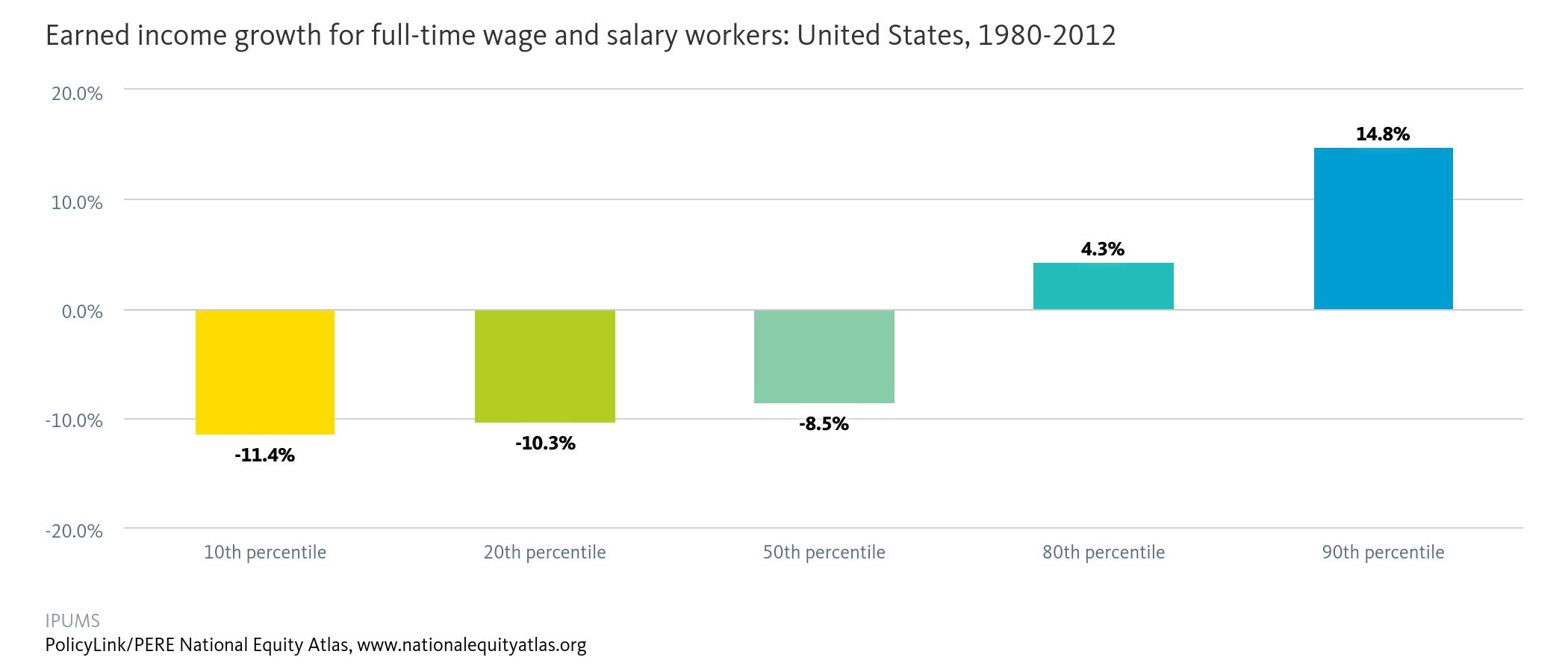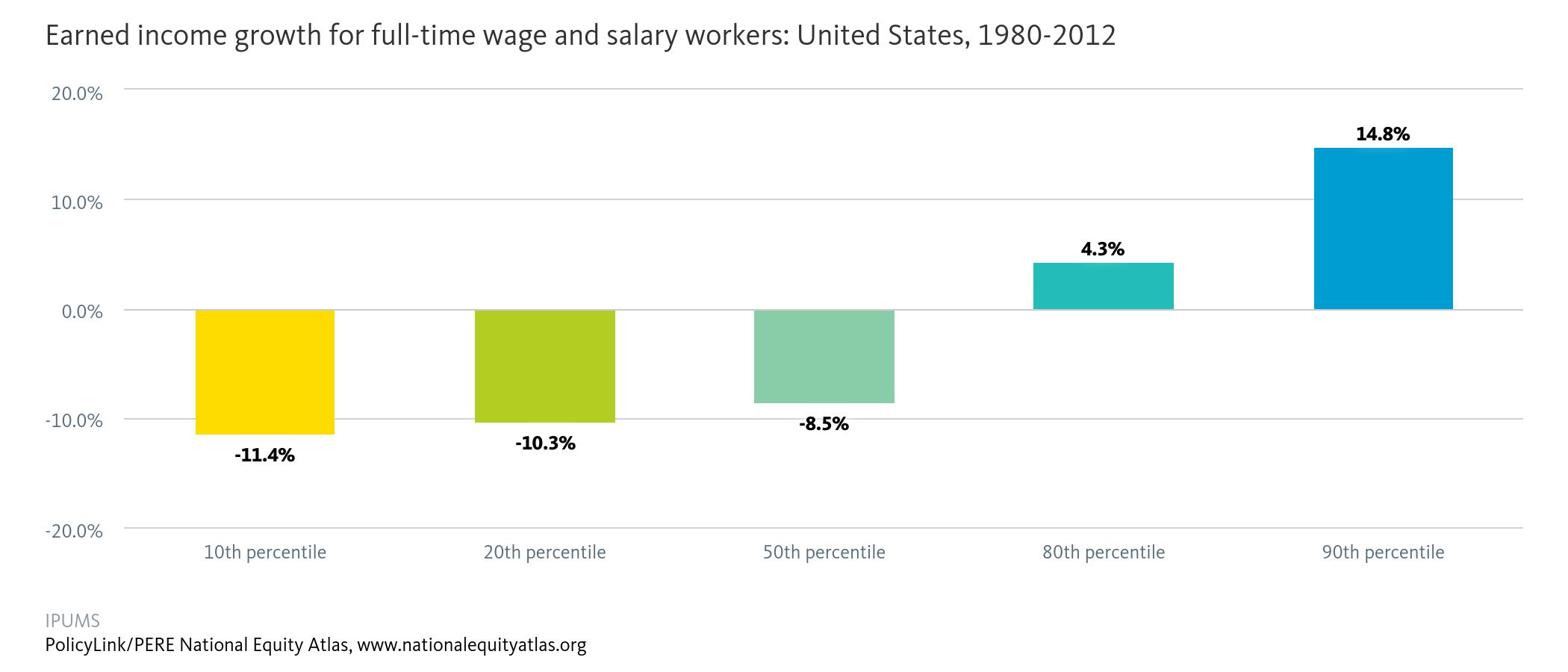Fairfax County Reaffirms Equity with a Resolution for “One Fairfax”
For many years, officials, advocates, and agency staff in Fairfax County, Virginia, have been concerned with the inequities affecting low-income residents and people of color in the county — and in its 2015 Strategic Plan to Facilitate Economic Success the County Board of Supervisors acknowledged the central importance of equity as a driver of regional economic growth and vitality. But they needed deeper, cross-sectoral data to help underscore their day-to-day experiences and to point the way toward actionable policy solutions.
With just over a million residents, Fairfax County has seen a surge of growth, primarily driven by people of color. Between 2000 and 2010, the population of the county grew 11 percent, while there was a 42 percent increase of people of color in the county.
"Fairfax is generally a suburban community known typically to be affluent so these issues are sometimes masked in our general data," said Karla Bruce, deputy director of the Fairfax County Department of Neighborhood and Community Services.
In 2015, county officials and local community leaders partnered with PolicyLink and the University of Southern California's Program for Environmental and Regional Equity (PERE) to release an Equitable Growth Profile for Fairfax County, Virginia. The disaggregated data reported in the profile brought Fairfax County's racial inequities into clear focus, and catalyzed a local coalition into action. By supporting the development of the profile, Fairfax leadership demonstrated its commitment to equity and a vision of "One Fairfax" — a community in which all can participate and prosper.
As the profile pointed out, Fairfax County ranks second nationally in terms of household income, with a median of $110,292. At the same time, the middle class is shrinking: workers in the bottom 20 percent saw their wages stagnate between 1979 and 2012, while workers in the highest 20 percent have seen above-national-average wage increases. More than 10 percent of Latinos and Blacks lived in poverty in 2012 compared to less than 3 percent of Whites.
"I think the Equitable Growth Profile affirmed some things that many folks had been talking about anecdotally in terms of demographic shifts, population needs, and concerns that a number of people were having," said Patricia Mathews, president and CEO of the Northern Virginia Health Foundation. "I think it wasn't so much a new statement, but rather it allowed people to say, 'Now we have data. Now we can think about this a lot more strategically.'" Community leaders like Mathews were engaged in the process of producing the profile and in discussions about its findings. The county has been guided by a collective impact framework to advance equity, characterized by its "respect for and integration of the wisdom, voice, experience, and leadership of community residents."
"We need to understand and improve our work"
This summer, Fairfax County rededicated itself to equity by passing the One Fairfax Resolution, a formal declaration of commitment to racial and social equity passed by both the County Board of Supervisors and the Fairfax County School Board. The resolution will direct the development of a One Fairfax policy, which the boards hope to adopt as early as next summer.
The resolution formalizes the county's definition of racial and social equity and acknowledges the importance of equity to fostering greater opportunities and inclusive growth: "to truly create opportunity, we need to understand and improve our work through a racial and social equity lens from the very core of the organization outward, focusing intentionally and deliberately towards sustainable structural changes."
Over the last several years, Fairfax County has undertaken several initiatives to address racial and social disparities in a variety of areas, including juvenile justice, education, employment, health, and child welfare. Prior to the publication of the Equitable Growth profile, a 2012 study from the Center for the Study of Social Policy encouraged government leaders to scrutinize the pathways and institutions — including the police and school systems — that caused Black and Latino youth to be disproportionately represented in the juvenile justice system. They created an interagency team to go through the analysis and drill into what could be done to address disparities. They also joined the Government Alliance on Race and Equity (GARE).
Karen Shaban, strategic project manager of Fairfax County government, said that all of these efforts helped officials to realize that sustainable change goes beyond human services and moved them to look at other parts of their system, such as zoning policies, transportation, and land use. "All of these efforts set the stage for us to formally say there needs to be more intentionality to make sure that Fairfax County's institutions and systems are not contributing to the disparities that exist."
Currently, the County is using the equity concepts of the new One Fairfax resolution to guide planning related to a number of strategic initiatives in the areas of early childhood education, community development, and recreation. "These are ripe opportunities to bring an equity lens to the work," said Shaban. The lens can help guide future redevelopment projects like the planning for a 10-acre campus of a former high school.
Experimenting with "equity-in-practice" — particularly expanding community engagement beyond common public meetings — will give county staff an opportunity to try out some tools and processes to see what works best as they continue to develop the equity policy mandated by the One Fairfax resolution.
"I think we have a really progressive government in Fairfax County," said Karen Cleveland, president and CEO of Leadership Fairfax, a community leadership development organization. "But when you work for the government, you can very easily get drawn into policy development and policy implementation. What this One Fairfax resolution does is lift the work above that. It says, 'This is going to be our umbrella.'"
Leadership Fairfax, the Northern Virginia Health Foundation, and other organizations are working as thought partners with county staff to make sure that community needs are consistently prioritized — and not just from a government services perspective.
"It's helped us to not only have a common agenda but also to really commit to outcomes," added Bruce, "so that we can shift the possibility for progress and share in the responsibility for change. We haven't reached our destination, but there is definitely power in the networks that we are creating. I am hopeful that we will be able to realize this vision of One Fairfax."

